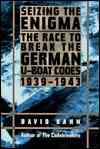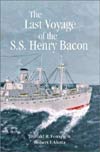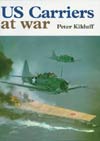Seizing the Enigma
The Race to Break the German U-Boat Codes, 1939-1943
Kahn, David
1991, Houghton Mifflin Company, Boston
ISBN 0395427398
Hardcover, 337 pages, 39 b&w photos, 5 maps
| Type. | General History |
| Pros. | Well-written behind the scenes look at this subject; much use of primary sources |
| Cons. | None to mention |
| Rating. |  |
 This book focuses on the role of Enigma in the Battle of the Atlantic. A few lines from the preface admirably sum up the content of the book:
This book focuses on the role of Enigma in the Battle of the Atlantic. A few lines from the preface admirably sum up the content of the book:
"This book differs in several other ways from earlier accounts of the Enigma. It depicts the codebreakers, especially those working on the naval Enigma, behind their closed doors and relates case histories of the role of the decodes in the defeat of the U-boats. It focuses upon personalities and rests as much as possible upon primary sources, namely documents and interviews. It shows how much of a 'near-run thing' the cryptologic battle was and seeks to explain why the Allies won it. Finally, it weighs the effect of codebreaking on the war at sea."
Kahn clearly and engagingly explains complicated concepts and describes key events. Starting with a brief glimpse of Lemp in U-110 on the eve of the famous "secret capture", based on interviews with the U-boat's Radioman Third Class Heinz Wilde, the book then moves back to World War I instances of the breaking and capturing of German codes. Subsequent chapters cover the development of commercial Enigma by Scherbius in the years during and immediately after WWI, and the Polish work to crack German codes during the 1930s, contrasted with British inactivity in this area in the interwar years.
All World War II captures of codebooks and equipment from U-boats and surface vessels are then presented in chronological order (U-33, Julius Pickenpack, Krebs, München, Lauenburg, U-559, and of course U-110), along with descriptions of how these new bits of information and technology directly impacted work at Bletchley Park and the fates of convoys (such as SC 127, which was the first of many to be re-routed based on intelligence findings) and U-boats (including the ill-fated tankers). Traffic analysis as performed by the well-known Harry Hinsley is described; throughout the narrative, Hinsley's wartime activities are closely followed.
Additional interesting sections of the book cover German investigations of possible compromises of their codes; reasons why the Germans were convinced their codes were not being read; and cooperation with the Americans. A step by step discussion of how BdU and the U-boats communicated is also included.
The final chapter provides an analysis of Ultra's impact, of Allied superiority as codebreakers, and why the Germans retained Enigma in spite of suspicions that it had been compromised. The book concludes with an appendix: Enciphering with Naval Enigma.
Review written by Tonya Allen.
Published on 29 Aug 2002.
This title is highly recommended.
Purchase information: (info) Get Seizing the Enigma now at amazon.co.uk
Get Seizing the Enigma now at amazon.co.uk
Return to our main review page.



